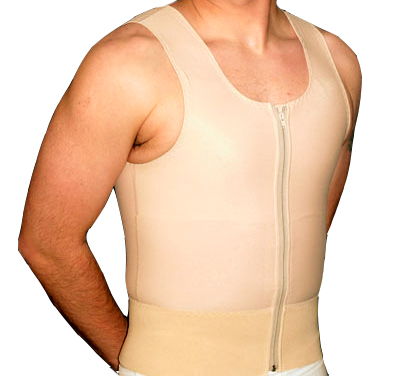Returning to Work
We understand that getting back to your daily routine is important, and you might be wondering when it’s safe to return to work. Here’s a simple guide:

Office or Desk Jobs: You can usually return to work the day after surgery. Before heading back to work, we recommend a quick follow-up visit to the clinic. The follow-up only takes about 20 minutes, ensuring your recovery is on track.

Physically Demanding Jobs: If your job involves physical labor, such as heavy lifting, operating machinery, or construction work, it's best to avoid strenuous activities for the first two weeks. This will help prevent any strain on the operated area and ensure a smooth recovery.

Exercise and Workouts: We encourage light physical activities to aid recovery. You can start leg workouts, light walking, or gentle jogging as early as a week after surgery. However, wait at least 4 weeks before resuming weightlifting or chest exercises. During the first month, avoid using your arms and chest too much to prevent complications.
Important Post-Op Care Tips

- Healthy Eating: Start with soft, gentle foods and avoid spicy or strong-tasting dishes. You can enjoy most foods, except for alcoholic beverages and overly salty meals.
- Avoid Smoking: Smoking can significantly delay the healing process and increase the risk of infection. This includes traditional cigarettes, e-cigarettes, hookah, and even exposure to secondhand smoke. Avoid smoking for at least 2 weeks post-surgery.
- Handling Fluid Leakage: It’s normal to experience a bit of fluid leakage during the first day. If this happens, replace the dressing with a sterile gauze. Make sure not to open the dressing point as the wound needs to stay protected from contamination.

- Compression Garment: Wearing your compression vest is crucial for your recovery. It prevents fluid accumulation, helps reduce swelling, and supports skin retraction. Wear it for 4 weeks—24 hours a day for the first 2 weeks, then 12 hours a day for the next 2 weeks.
- Showering and Bathing: You can take a shower 1 to 2 days after surgery with a waterproof band on the wound. For hot baths, saunas, or swimming, give your body 4 weeks to fully recover.
- Sponge Pad Care: If you were provided with a sponge pad, apply it around the areola for only 7 days. This helps with healing and provides gentle support.
What to Expect During Recovery
Your chest might appear asymmetrical, lumpy, swollen, or slightly dimpled. Don’t worry—this is a temporary phase that can last for 4 to 6 months. Light daily activities like walking can speed up recovery, but avoid lifting anything heavier than 40 pounds (about 18 kg) during the first week. It’s okay to roll luggage, but avoid lifting it.
- Massage and Stretching: After 2 weeks, start light massage and gentle stretching. The “Biobond (lumps)” under the skin may take 4 to 6 months to gradually decrease.
- Scarring: It’s normal to develop ‘Hypertrophic scars’ after chest surgery. Proper post-op care is essential to minimize their appearance.
When to Contact Us
our safety and comfort are our top priorities. Please reach out to us immediately if you experience any of the following symptoms within 3 to 4 days after surgery:
- Excessive pain
- High fever
- Yellowish discharge from the wound
- Persistent itching
We are here to support you every step of the way. If you have any questions or concerns, please do not hesitate to contact us. Your smooth and speedy recovery is our goal!
Verwendung von Steri-Streifen nach Gynäkomastie-Operationen
Verwendung von Steri-Strips nach Gynäkomastie-Operationen - Sie können Narbenbildung bei der Operation nicht zu 100% durch einen Schnitt vermeiden. Selbst wenn Sie die Operation auf genau die gleiche Weise durchführen, die gleichen Materialien und die gleiche Nahttechnik verwenden, variieren die Ergebnisse von Person zu Person.
[FAQ] Fettleibigkeit und Gynäkomastie im Kindesalter
Bei Jugendlichen sind 20–30 % der Jungen im Teenageralter von Gynäkomastie betroffen, wobei die meisten Fälle innerhalb eines Jahres spontan abklingen. Etwa 10% können jedoch aufgrund von Faktoren wie Fettleibigkeit, chronischem Stress und bestimmten Medikamenten eine anhaltende Brustvergrößerung entwickeln. Fettleibigkeit bei Kindern setzt sich, wenn sie nicht behandelt wird, oft bis ins Erwachsenenalter fort und erhöht die Wahrscheinlichkeit einer Gynäkomastie. Darüber hinaus deuten Forschungsergebnisse darauf hin, dass bis zu 30 % der Fälle mit einer genetischen Veranlagung in Verbindung gebracht werden könnten, was die Bedeutung frühzeitiger Interventionen im Lebensstil und des Bewusstseins für die Familienanamnese unterstreicht.
Die koreanische Krankenversicherung gilt für Gynäkomastie.
Viele Ausländer, die in Korea leben, sind in der koreanischen Krankenversicherung eingeschrieben. Im Falle einer Gynäkomastie des Grades 2 oder höher wird die koreanische Krankenversicherung angewendet.
[FAQ] Verursachen Proteinpräparate oder Alkohol Gynäkomastie?
Proteinpräparate können auch eine von mehreren Ursachen für Gynäkomastie sein.
[FAQ] Über den Grad der Gynäkomastie
Dieser Grad der Gynäkomastie ist von Person zu Person leicht unterschiedlich. Die Operationsmethode sollte entsprechend dem Alter des Patienten, der Muskelmasse, der Erholungsphase, dem Lebensstil und den Bedürfnissen des Patienten ausgewählt werden. In diesem Zusammenhang werden Sie sich mit einem Spezialisten beraten und eine Entscheidung treffen.
[FAQ] Wie diagnostiziert man Gynäkomastie selbst?
Dr. Jeon erklärt, wie man Gynäkomastie selbst diagnostiziert.
